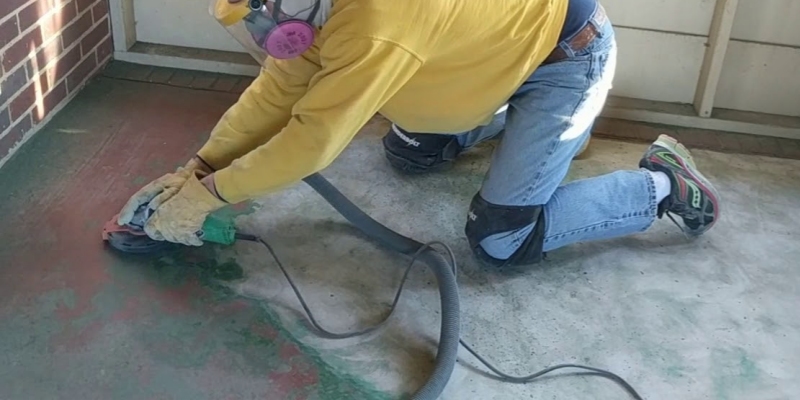How can we help you
Removing paint from concrete can be challenging, but with the proper tools and methods, the process becomes efficient and accurate. Whether you're refurbishing an old workshop floor or getting a commercial area ready for refinishing, knowing the correct approach to paint removal ensures a clean, smooth surface ready for a new coating.
Step 1: Assess the Surface and Paint
Start by identifying the type of paint and its condition. Oil-based, epoxy, and acrylic paints each require different removal techniques. It's also important to evaluate the concrete’s hardness, texture, and any existing coating layers. This assessment helps determine the best combination of mechanical and chemical methods for effective removal.
Step 2: Prepare the Workspace
Before starting grinding, make sure the area is clean and safe. Clear away loose debris, ensure proper ventilation, and wear protective gear such as goggles, gloves, and a dust mask. Protect nearby walls and furniture from dust and debris by covering them. A well-prepared workspace promotes safety and efficiency throughout the job.
Step 3: Select Appropriate Tools
Choosing the right tools is crucial for successful paint removal. For large surfaces with heavy or multiple paint layers, mechanical grinding with professional-grade equipment yields the best results. High-quality TransGrind diamond grinding tools offer consistent grinding performance and durability, allowing even paint removal without damaging the concrete beneath. For thicker coatings, Husqvarna PCD tools are effective for quickly stripping stubborn layers, while metal diamond grinding pads can be used afterward to smooth the surface in preparation for polishing or sealing.

Step 4: Grind and Clean the Surface
Move the grinder steadily across the floor in overlapping passes to achieve an even finish. Avoid applying excessive pressure to prevent surface marks. After removing most of the paint, switch to finer grit tools to smooth the concrete texture. Thoroughly vacuum the area afterward to eliminate dust and residue before checking for any remaining paint spots.
Step 5: Final Rinse and Inspection
Finish by rinsing the surface with clean water and allowing it to dry completely. This final cleaning removes any remaining dust or slurry, creating an ideal base for sealers, coatings, or polishing. Proper paint removal not only enhances the floor’s appearance but also helps extend the life of the next finish.
Using premium diamond and PCD tools makes the paint removal process faster, cleaner, and more professional. With proper preparation and reliable tools from trusted suppliers like TransGrind, contractors can achieve consistent results and efficiently restore concrete surfaces for future use.